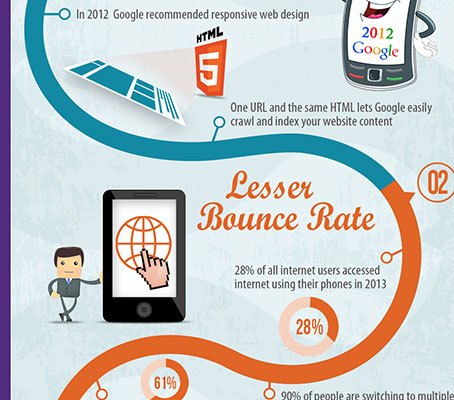Internet Site Layout Basics: Tips For Building A User-Friendly Website
Internet Site Layout Basics: Tips For Building A User-Friendly Website
Blog Article
Written By-Hall Ehlers
When it involves website layout, making sure user-friendliness is key. From wc3 ada compliance to structured navigation, every component plays a vital function in creating a site that caters to your target market's demands. Yet what concerning the finer information that can make or damage an individual's searching experience? Remain tuned as we discover some often-overlooked ideas that can elevate your internet site's usability to the following level, making it genuinely stand apart in the digital landscape.
Value of Responsive Layout
Receptive style is a crucial facet of contemporary internet site growth. Ensuring your site is responsive ways that it can adapt to various display dimensions and tools, giving a seamless experience for individuals.
With the increasing use of mobile phones and tablet computers to access the net, having a responsive design is necessary for reaching a broader target market. It aids in improving user experience by making your site easy to browse and keep reading any kind of device.
Additionally, receptive layout can positively impact your search engine positions, as internet search engine like Google focus on mobile-friendly websites. By having https://internet-marketing-meanin99876.loginblogin.com/38050488/producing-a-suitable-website-layout-a-comprehensive-guide , you're also future-proofing your internet site, as new devices with varying screen dimensions continue to emerge.
Simplify Navigation Framework
To improve user experience and promote simple access to details on your website, streamlining the navigating structure is paramount. When making your website, focus on developing a clear and instinctive navigation menu that aids visitors discover what they're searching for quickly.
Restriction the variety of menu products to the basics, grouping relevant pages together to prevent frustrating users. Use descriptive tags that plainly indicate the content of each web page, making it much easier for individuals to recognize where each web link will take them.
Take into consideration executing dropdown menus for subcategories to prevent cluttering the major navigation bar. In addition, consist of a search bar plainly on the web page for customers that favor looking for details information.
Focus on mobile responsiveness in your navigating layout to make sure simple accessibility on all devices.
Optimize Page Tons Rate
Improving web page load rate is critical for retaining visitors on your website. Slow-loading https://www.inc.com/joe-galvin/the-covid-effect-why-ceos-must-adapt-a-digital-marketing-mindset.html annoy individuals and can lead to high bounce rates. To optimize web page load rate, beginning by enhancing pictures. Compress pictures without compromising quality to lower their data dimensions.
Furthermore, allow browser caching to store regularly accessed sources in your area, quickening load times for returning visitors. Minify CSS, JavaScript, and HTML files by removing unneeded personalities, comments, and format, improving lots speed.
Consider using web content services (CDN) to disperse your internet site's material across numerous servers worldwide, decreasing latency for individuals accessing your website from various places. Lastly, limit making use of third-party manuscripts and plugins, as they can substantially influence load times.
Conclusion
In conclusion, by incorporating receptive style, streamlining navigating, and optimizing page lots speed, you can create an easy to use web site that appeals to a larger target market and improves user experience. These essential elements make certain that site visitors can quickly accessibility and navigate your website across different devices, resulting in boosted involvement and satisfaction. By concentrating on these crucial elements, you can construct an effective site that keeps users coming back for more.
